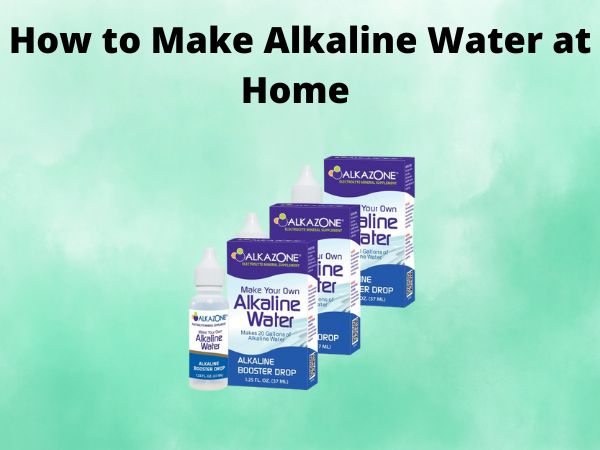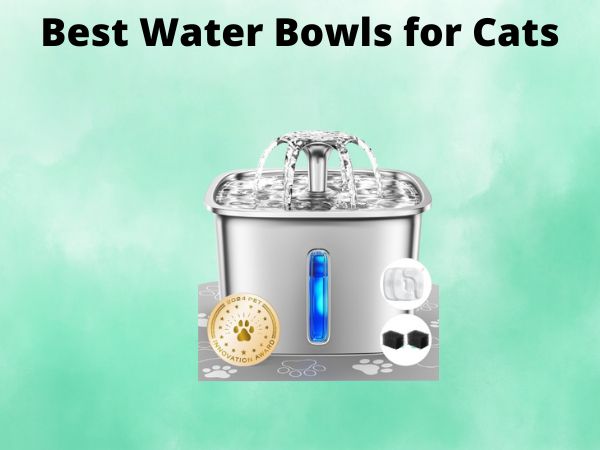How to Make Alkaline Water at Home Easily
In today’s fast-paced world, we’re constantly bombarded with information about the latest health trends and wellness crazes. One that’s been gaining a lot of traction lately? Alkaline water. But what exactly is it, and why is everyone so excited about it? More importantly, can you really make it at home, or is it just another expensive fad?
Well, my friends, I’m here to tell you that alkaline water is the real deal, and you can absolutely create it in the comfort of your own kitchen. In fact, it’s easier than you might think. So, pull up a chair, grab a glass of water (regular for now), and let me walk you through the step-by-step process of how to make alkaline water at home.
Table of Contents
What is Alkaline Water, and Why Should You Care?
Before we dive into the “how-to,” let’s take a quick step back and understand what alkaline water is and why it’s become such a hot topic in the health and wellness community.
Alkaline water is, quite simply, water that has a higher pH level than regular drinking water. The pH scale ranges from 0 to 14, with 7 being neutral. Anything above 7 is considered alkaline, and alkaline water typically falls between 8 and 10 on the pH scale.
The reason this matters is that our bodies function best when we maintain a slightly alkaline pH level, around 7.4. Unfortunately, the modern Western diet, which is high in processed foods, sugar, and unhealthy fats, can push our bodies towards a more acidic state. This acidity has been linked to a host of health issues, including:
- Decreased immune function
- Increased inflammation
- Fatigue and low energy levels
- Weight gain and difficulty losing weight
- Accelerated aging and premature wrinkles
Drinking alkaline water can help counteract this acidity, restoring your body’s natural pH balance and potentially providing a range of benefits, from improved digestion to better skin health. And the best part? You can make it right at home, without breaking the bank.
The Step-by-Step Guide to Making Alkaline Water at Home
Okay, now that you know what alkaline water is and why it’s so important, let’s get to the good stuff – the step-by-step process for making it yourself. Here’s what you’ll need:
- A pitcher or container with a lid
- Baking soda (sodium bicarbonate)
- Mineral drops or pH drops (optional)
- Filtered water
Step 1: Choose Your Container
The first step is to select a pitcher or container that’s large enough to hold the amount of water you want to make. A 1-gallon pitcher or container is a great starting point, as it will give you enough alkaline water to last a few days.
Step 2: Add the Baking Soda
Next, measure out 1/2 teaspoon of baking soda for every 1 cup of filtered water you’re using. So, if your container holds 1 gallon (4 cups), you’ll want to add 2 teaspoons of baking soda.
Carefully pour the baking soda into the container and stir it in until it’s fully dissolved. This is the key to creating alkaline water – the baking soda raises the pH level of the water.
Step 3: Optional: Add Mineral Drops
If you want to take your alkaline water to the next level, you can add a few drops of mineral drops or pH drops. These supplements will further increase the pH and add beneficial minerals like calcium, magnesium, and potassium.
Just follow the instructions on the product you choose, and be sure not to overdo it. A little goes a long way when it comes to these alkaline water boosters.
Step 4: Fill with Filtered Water
Finally, fill the container the rest of the way with your filtered water of choice. It’s important to use filtered water, as this will ensure you’re not just adding more impurities to the mix.
Step 5: Let It Sit and Enjoy
Once you’ve added the baking soda (and optional mineral drops), put the lid on your container and let it sit for at least 30 minutes. This gives the ingredients time to work their magic and raise the pH of the water.
After 30 minutes, your alkaline water is ready to enjoy! You can keep it refrigerated for up to 3-5 days, and you can even make a larger batch to last you through the week.
Conclusion
Making alkaline water at home is a simple, cost-effective way to improve your health and well-being. By raising the pH of your drinking water, you can help neutralize acidity, boost your energy levels, and support your overall bodily functions.
So, what are you waiting for? Grab some baking soda, a pitcher, and get to work on creating your own rejuvenating, alkaline-rich water. Your body (and taste buds) will thank you!
FAQs
How often should I drink alkaline water?
Experts recommend drinking alkaline water as your primary drinking water source, replacing regular water throughout the day. Aim for at least 8 glasses (64 ounces) of alkaline water per day for maximum benefits.
Can I use lemon or other fruits to make alkaline water?
While adding sliced lemon, lime, or other fruits to your water can provide a refreshing flavor, it doesn’t actually make the water more alkaline. Baking soda is the key ingredient for raising the pH level. Fruit-infused waters are delicious, but they won’t have the same alkalizing effects.
Is alkaline water safe to drink long-term?
Yes, alkaline water is generally considered safe for long-term consumption, as long as you don’t exceed the recommended pH range of 8-10. It’s important not to overdo it, as extremely high pH levels can cause side effects. Stick to the simple baking soda method, and you’ll be good to go.
How can I test the pH of my homemade alkaline water?
You can purchase pH test strips or a digital pH meter to measure the pH level of your alkaline water. Aim for a pH between 8-10 for optimal benefits. If the pH is too low, simply add a bit more baking soda next time. If it’s too high, dilute with some regular filtered water.
Can I use this method for other liquids besides water?
The baking soda alkalizing method works best for water. While you could theoretically use it with other beverages, like juices or teas, the results may be unpredictable, and the flavor could be affected. It’s best to stick to plain, filtered water for the most reliable and consistent alkaline water production.


